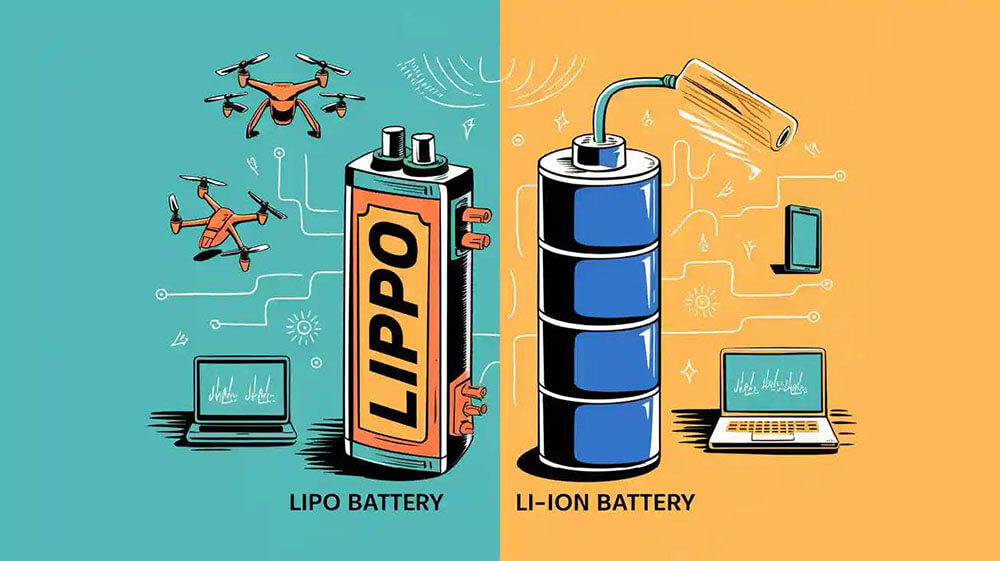Contents
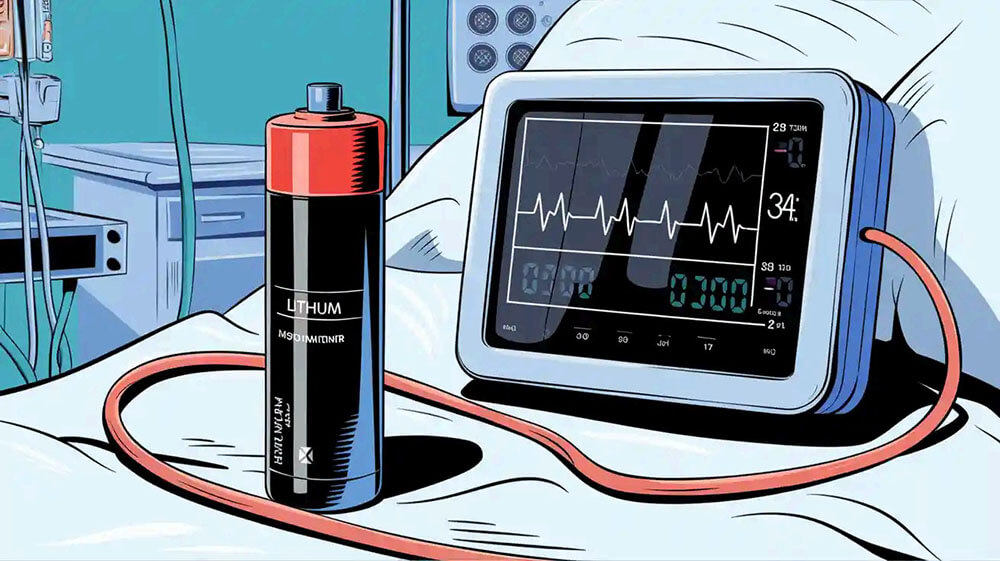
Patient monitors and lithium battery technology form a vital partnership in modern healthcare. When selecting lithium batteries for patient monitors, it’s essential to consider the specific clinical environment, safety requirements, and operational needs.
Key Takeaways
Reliable power is essential for patient monitors to ensure uninterrupted monitoring of vital signs.
Lithium batteries are the best choice for medical devices due to their performance, safety, and extended battery life.
Lithium polymer batteries are light and flexible. They are great for small and wearable patient monitors.
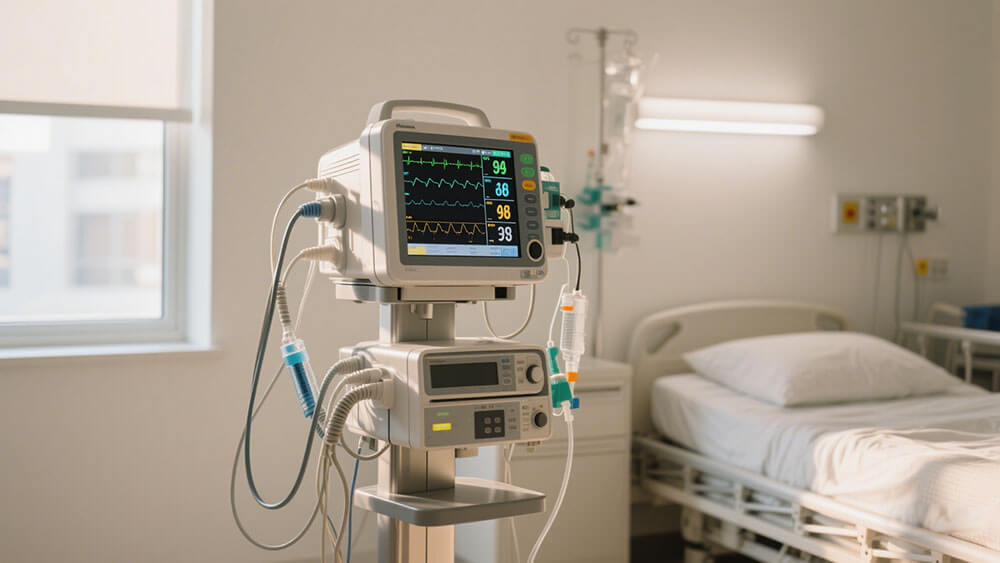
Part 1: Overview of Patient Monitors and Lithium Battery Technology
1.1 Core Selection Criteria for Lithium Batteries in Patient Monitors
Lithium batteries play a pivotal role in ensuring the reliability of patient monitors. These devices require consistent power to deliver accurate readings and uninterrupted operation. Lithium battery technology meets these demands by offering high energy density and long-lasting performance. This ensures that critical medical devices remain functional during extended use or emergencies.
Energy Density vs. Runtime Balance
High-Density Li-ion Batteries: Ideal for mobile monitors requiring extended runtime (e.g., emergency transport), typically 1,000–2,000mAh.
LiFePO₄ (Lithium Iron Phosphate): Preferred for ICU fixed monitors as backup power, offering up to 5,000 cycles and tolerance to frequent plugging/unplugging.
Charge/Discharge Performance
Fast-Charging Compatibility: OR monitors should support 1C fast charging (80% in 1 hour) to avoid intraoperative power loss.
Low-Temperature Performance: Field rescue monitors require batteries retaining >70% capacity at -20°C (special electrolyte formulations).
Mechanical Design Compatibility
Ultra-Thin LiPo Batteries: For handheld monitors with thickness <5mm, enabling curved designs.
Shock-Resistant Construction: Batteries for ambulance use must pass MIL-STD-810G vibration tests with anti-loosening connectors.
1.2 Battery Technologies for Medical Scenarios
Application | Technical Requirements | Recommended Solutions |
|---|---|---|
Neonatal Monitoring | Low-current monitoring (<50mA), ±1% accuracy | Low self-discharge LiFePO₄ (monthly loss <2%) |
Intraoperative Monitoring | Electrosurgical interference resistance, 10A pulse discharge support | Shielded Li-ion + supercapacitor buffer |
Wireless Remote Monitoring | Continuous power for Bluetooth/Wi-Fi, low-power mode switching | Dual-cell design (main + communication backup) |
1.3 Safety Standards for Medical-Grade Batteries
Failure Mode Protection
Dual Fail-Safe: Temperature/voltage sensors + physical fuses to cut off circuits before thermal runaway.
Hermetic Sealing: IP67-rated epoxy potting to prevent fluid ingress during disinfection.
Electromagnetic Compatibility (EMC)
Compliance with IEC 60601-1-2:2001, ensuring no interference in 3T MRI environments.
Multi-band filtering to suppress electrosurgical device noise.
Lifecycle Traceability
Built-in FRAM memory logging charge/discharge history (>10 years), meeting FDA 21 CFR Part 11 audit requirements.
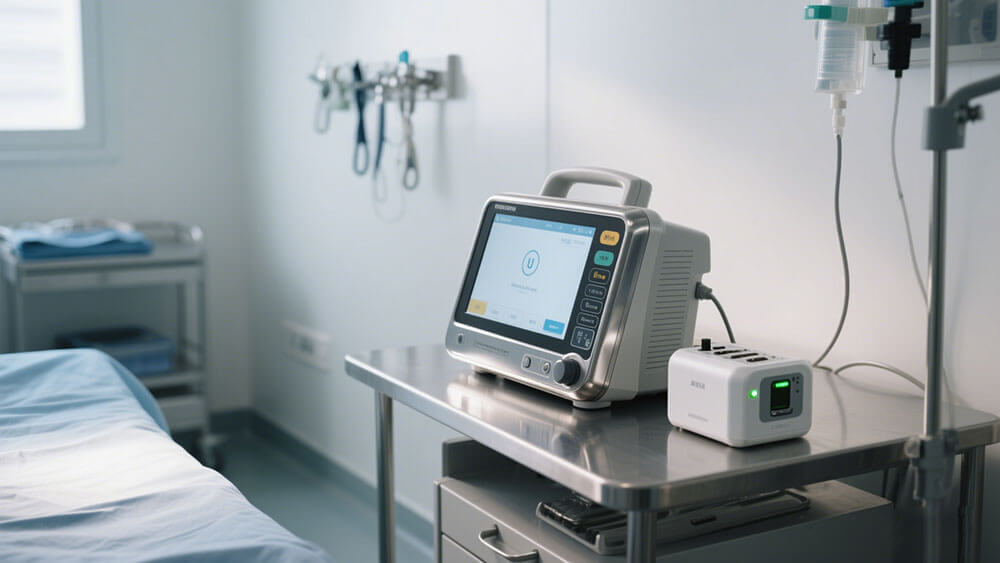
Part 2: Types of Medical Batteries Used in Patient Monitors
2.1 Overview of Lithium Battery Chemistries
Lithium batteries are categorized by their cathode materials, which determine key performance characteristics.
Chemistry | Energy Density | Safety | Lifespan | Medical Use Cases |
|---|---|---|---|---|
LiFePO₄ | Medium | ★★★★★ | ★★★★★ | ICU/fixed systems, field medical |
LiPo (NMC/LCO) | Medium-High | ★★★☆☆ | ★★★☆☆ | Wearables, handheld devices |
NMC | High | ★★★☆☆ | ★★★★☆ | Wireless/mobile monitors |
LTO | Low | ★★★★★ | ★★★★★ | Emergency transport, fast cycling |
Battery selection for patient monitors prioritizes safety and compliance, followed by balancing energy density and cost. For life-critical devices, LiFePO₄ + supercapacitor hybrids are the gold standard, while LiPo/NMC excels in portability. Strict adherence to OEM guidelines and regular internal resistance/capacity testing ensures reliability!
2.2 Advantages and Limitations of Lithium Battery Chemistries in Patient Monitors
Chemistry | Advantages | Limitations |
|---|---|---|
LCO | High energy density, lightweight | Safety risks, short lifespan |
LFP | Safe, long lifespan, temperature-tolerant | Lower energy density, higher cost |
LiPo | Flexible, lightweight, low self-discharge | Fragile, moderate safety |
NMC | High energy, balanced performance | Cobalt dependency, moderate safety |
LTO | Extreme lifespan, fast charging | Low energy density, high cost |
Tip: If you’re designing compact or wearable patient monitors, consider LiPo batteries for their adaptability and performance. Contact us for custom battery solutions tailored to your needs.
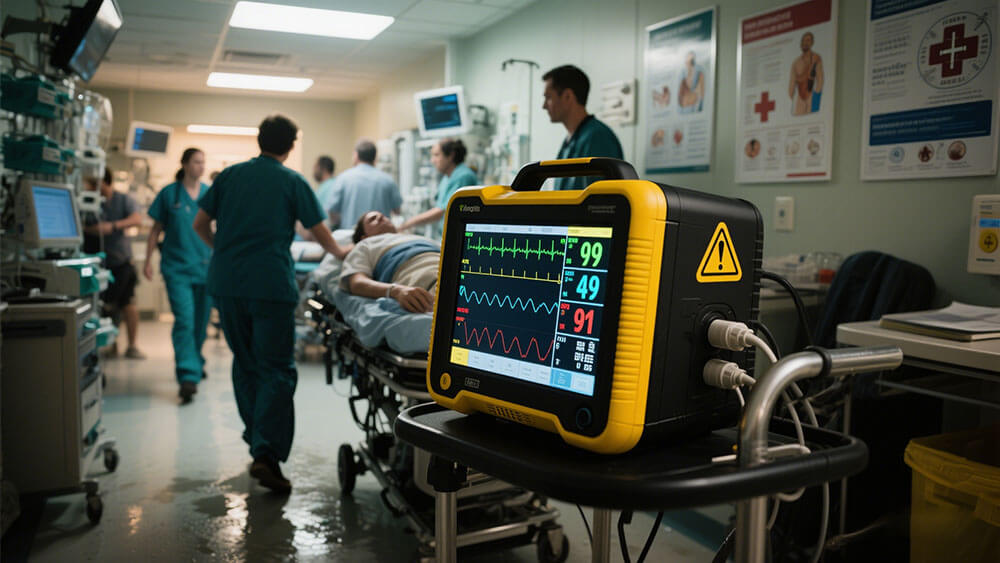
Part 3: Practical Guide for Evaluating and Testing Lithium Batteries in Patient Monitors
3.1 Safety Testing for Patient Monitors (Mandatory)
Thermal Runaway Test
Method: Place the battery in a 130°C oven for 30 minutes (per UL 1642).
Pass Criteria: Smoke is allowed, but no fire or explosion.
Medical Context: ICU devices require additional stability testing under continuous 50°C charge/discharge.
Nail Penetration Test
Method: Pierce a fully charged cell with a Φ3mm steel nail at 25mm/s (per GB 31241).
Pass Criteria: No fire or explosion within 1 hour.
Overcharge/Overdischarge Test
Overcharge: Charge to 200% rated voltage.
Overdischarge: Discharge to 0V and hold for 24 hours.
Requirements: BMS must cut off the circuit during overcharge; capacity recovery ≥90% after overdischarge.
3.2 Performance Testing about Medical Battery
Cycle Life Testing
Method:
Standard Cycle: Charge/discharge at 25°C (100% DOD) until capacity drops to 80%.
Accelerated Aging: Cycle at 45°C with 1.5C rate to extrapolate real-world lifespan.
Medical Requirement: LiFePO₄ must pass ≥2,000 cycles (80% DOD).
Low-Temperature Performance Test
Procedure:
Store the battery at -20°C for 24 hours.
Discharge at 0.2C to cutoff voltage.
Pass Criteria: Discharge capacity ≥70% of rated value (for field/ambulance equipment).
Pulse Discharge Capability
Test: Simulate defibrillator load with 10A pulse discharge (2s on, 10s off).
Requirement: Voltage drop ≤10%, no BMS protection triggering.
3.3 Clinical Scenario Simulation Testing
Continuous Monitoring Runtime Test
Method: Run the monitor at full load (ECG+SpO₂+NIBP+alarms) until shutdown.
Requirement: Actual runtime ≥90% of claimed value.
Charge Interruption Test
Procedure: Simulate intraoperative power switching (50 plug/unplug cycles daily).
Pass Criteria: No port wear, charging efficiency unchanged.
Disinfection Compatibility Test
Process: Wipe the battery casing with 70% isopropyl alcohol (3x/day for 30 days).
Checks: No corrosion, legible labels, maintained IP rating
Tip: Consult with a trusted supplier to explore custom battery solutions tailored to your specific medical applications. Visit Large Power’s custom battery solutions for expert guidance.
Lithium batteries play a crucial role in ensuring the reliability and efficiency of patient monitors. Their high energy density, safety, and versatility make them indispensable in medical applications.
Understanding the unique benefits of each battery type helps you select the best option for your devices. Partnering with a trusted supplier ensures access to reliable, high-quality solutions tailored to your needs.
Tip: Choose lithium batteries to enhance the performance and safety of your patient monitors.
FAQ
1. What makes lithium batteries ideal for patient monitors?
Lithium batteries offer high energy density, long lifespan, and safety features. These qualities ensure reliable performance for critical medical devices.
2. How do lithium batteries contribute to sustainability in healthcare?
Lithium batteries reduce waste with extended lifespans and fewer replacements. Their recyclability supports eco-friendly practices. Explore our sustainability initiatives.
3. Can lithium batteries be customized for specific patient monitors?
Yes, lithium batteries can be tailored to meet unique design and performance needs. Contact Large Power for expert guidance on custom battery solutions.



